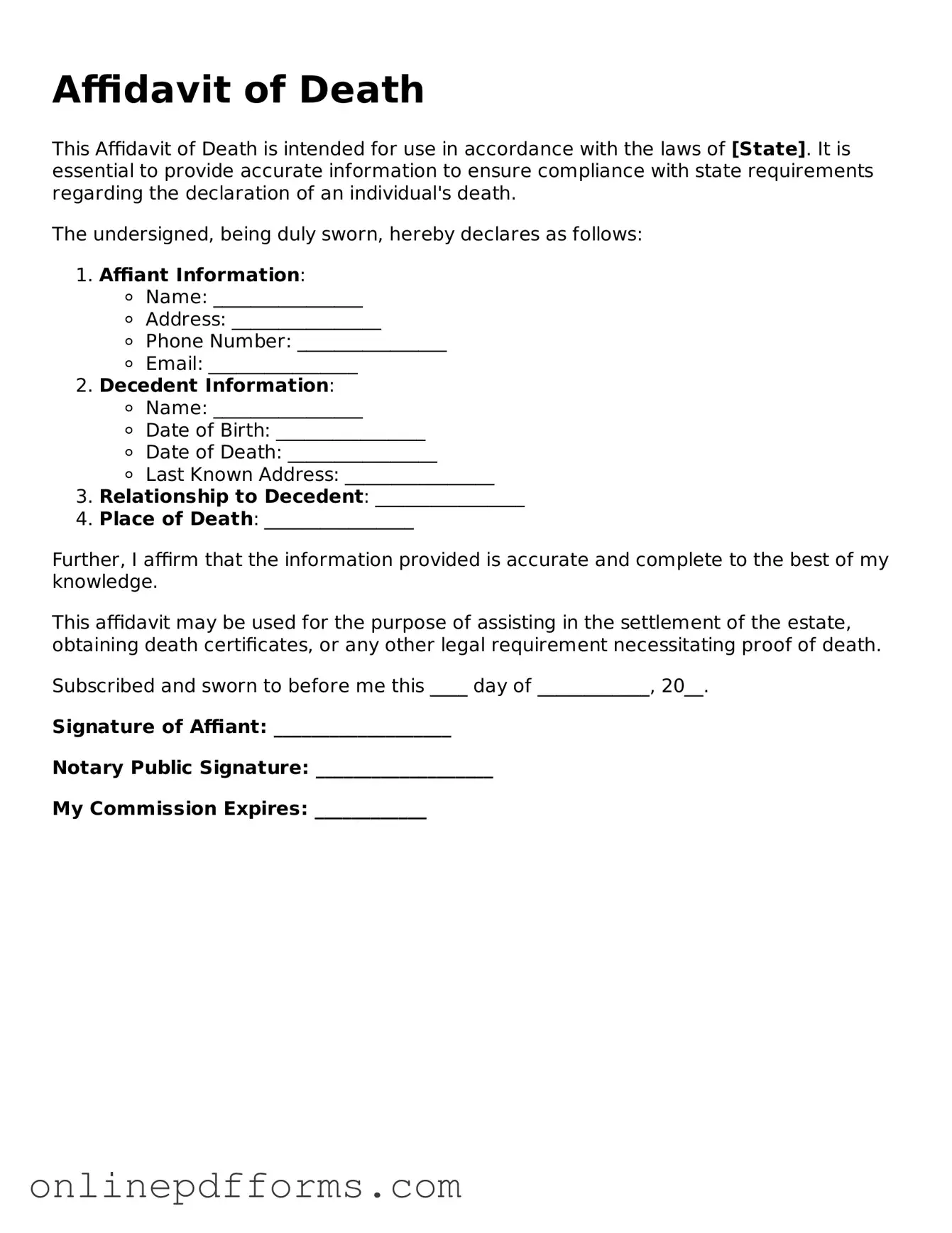The Affidavit of Heirship serves a similar purpose to the Affidavit of Death. It is a legal document used to establish the identity of heirs when someone passes away. This affidavit is typically used in situations where a deceased person did not leave a will. By declaring the names and relationships of the heirs, this document helps facilitate the transfer of assets without the need for probate, streamlining the process for those left behind.
The Death Certificate is another document closely related to the Affidavit of Death. A Death Certificate is an official record issued by a government authority that confirms an individual's death. It includes vital information such as the date, time, and cause of death. While the Affidavit of Death may be used to affirm the occurrence of a death for legal purposes, the Death Certificate serves as the primary proof required in many legal and administrative processes.
The Will is also comparable to the Affidavit of Death. A Will outlines a person's wishes regarding the distribution of their assets after their death. While the Affidavit of Death may simply confirm that someone has died, the Will provides detailed instructions on how to manage and distribute the deceased's estate. Both documents play crucial roles in the estate planning process, but they serve different functions.
The Probate Petition is another document that shares similarities with the Affidavit of Death. This petition is filed with a court to initiate the probate process, which is the legal procedure for validating a deceased person's Will and administering their estate. The Affidavit of Death may be used as supporting evidence in a probate case to confirm the death of the individual whose estate is being probated.
For those navigating the complexities of recreational vehicle transactions, utilizing an Auto Bill of Sale Forms can greatly simplify the process and ensure all necessary details are accurately recorded, protecting both the buyer and seller during the sale.
The Letter of Administration is also akin to the Affidavit of Death. This document is issued by a court to appoint an administrator to manage the estate of a person who died without a Will. While the Affidavit of Death establishes that the individual has passed away, the Letter of Administration grants authority to the appointed administrator to handle the deceased's affairs, ensuring that the estate is settled according to state laws.
The Affidavit of Support, although used in a different context, shares the affidavit format with the Affidavit of Death. This document is often used in immigration cases to demonstrate that a sponsor can financially support an immigrant. While the Affidavit of Support focuses on financial responsibilities, both documents require a sworn statement and can be used in legal settings to affirm certain facts.
Lastly, the Certification of Death is similar to the Affidavit of Death in that it serves as a formal acknowledgment of an individual's death. This certification is often issued by a medical professional or a funeral director and may be required for various administrative purposes. While the Affidavit of Death is a sworn statement made by an individual, the Certification of Death is an official record that provides similar confirmation of the death event.
